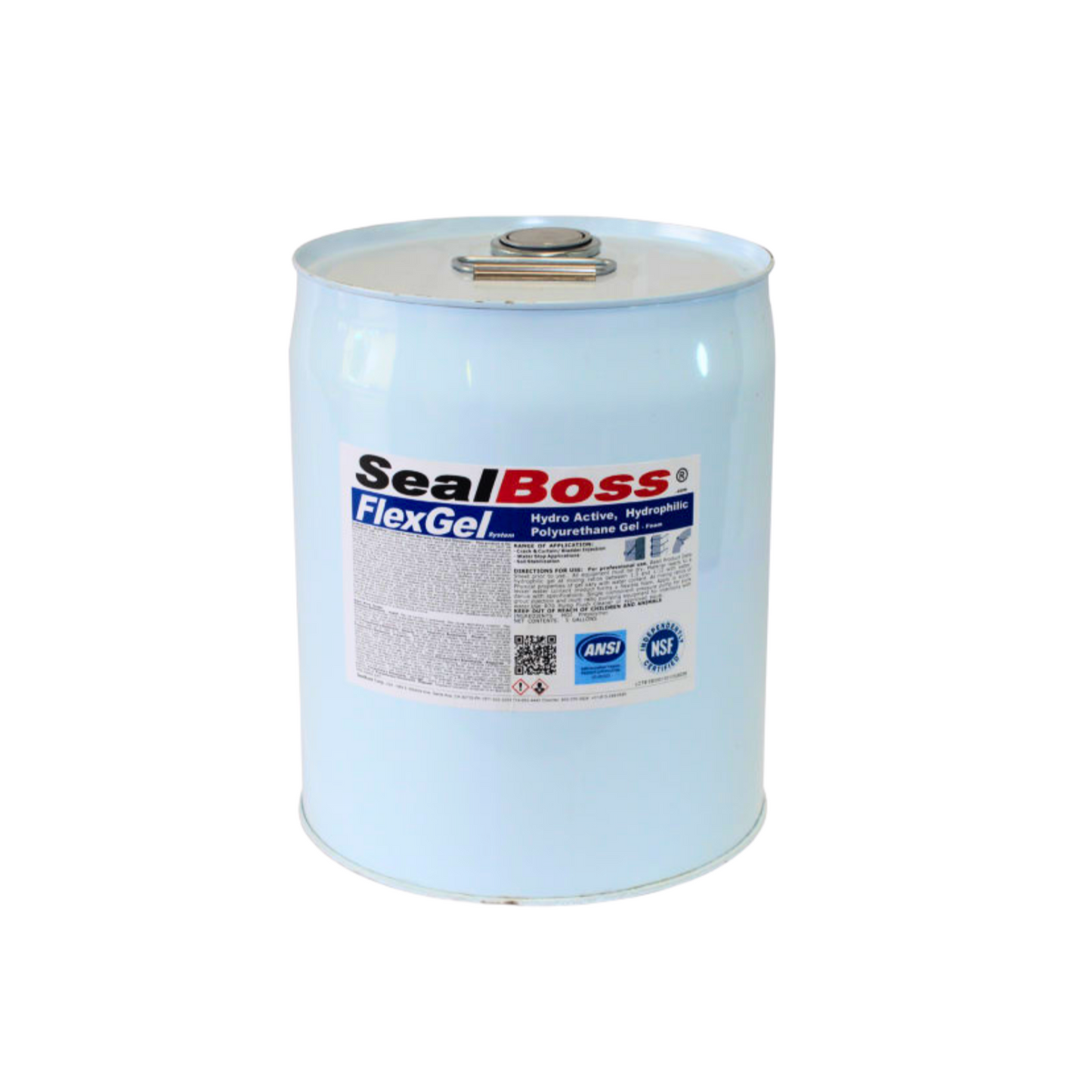SealBoss
SealBoss Flexgel Hydrophilic Injection Gel Grout
SealBoss Flexgel Hydrophilic Injection Gel Grout
FlexGel Hydrophilic Injection Gel – Water-Activated Polyurethane System
This flexible, water-activated polyurethane gel is a low-viscosity, hydrophilic injection resin formulated for leak sealing, curtain grouting, and soil stabilization. When mixed with water, it forms a durable gel or foam, depending on the ratio, and is ideal for deep penetration in fine cracks, pores, or underground structures.
Key Features:
-
Water-activated, flexible polyurethane gel system
-
Forms gel or foam based on mix ratio and pressure
-
Ultra-low viscosity (as low as 50 cps) for superior penetration
-
Certified for potable water contact (NSF/ANSI 61)
-
Cures in dry or damp conditions
-
Hydrophilic properties for strong mechanical bond in wet environments
-
Compatible with both single-component and multi-ratio pumps
-
Non-regulated for transport
-
For professional use only
Applications:
-
Leak sealing in tunnels, manholes, sewers, utility boxes, and pipe intrusions
-
Curtain grouting and bladder injection behind below-grade structures
-
Soil stabilization in loose or granular soils
-
Joint and crack sealing in concrete or masonry
-
Potable water tank repair and infrastructure waterproofing
Mix Ratios & Behavior:
-
1:4 to 1:15 (resin:water) → forms a flexible injection gel
-
1:1 to 1:2 → creates a closed-cell flexible foam under pressure
-
Gel time: approx. 1–3 minutes, depending on temperature and saturation
-
Less water = stronger gel consistency
Installation Notes:
-
For curtain/bladder injection, follow a staggered checkerboard drilling pattern (approx. 50 cm apart).
-
In low-moisture zones, water may need to be pre-introduced to trigger reaction.
-
Use multi-ratio pumps for precision or single-component equipment when moisture in substrate is sufficient.
Hydrophilic vs. Hydrophobic:
Hydrophilic resins absorb water to create flexible seals deep within micro-cracks and pores, forming a mechanical bond. They are ideal in damp or saturated concrete. Unlike hydrophobic foams, hydrophilic gels bond more chemically than physically, reducing reliance on injection pressure.


